Understanding the Basics of Soccer Formations 7v7
Soccer formations 7v7 are crucial to achieving balance between offensive and defensive strategies. Coaches must carefully select the right formation for their team, taking into account factors such as player strengths and weaknesses, opposition tactics, and game objectives. When executed correctly, a well-balanced formation can greatly enhance a team's attack while simultaneously strengthening its defense. Effective coaching is key to ensuring young players understand their roles within the chosen formation and are able to work together cohesively on the field.
What is a 7v7 Soccer Formation?
A 7v7 soccer formation refers to a strategy where each team has seven players on the field. The dimensions of the field are typically smaller, allowing for faster play and more opportunities to attack. This formation requires balance between offense and defense, with each player having specific roles based on their position.
Breaking down the positions in a 7v7 formation is crucial for effective coaching. Typically, there are three defenders, two midfielders, and two forwards. Defenders focus on preventing goals while midfielders act as both defense and support for the attackers. Forwards prioritize attacking and scoring goals. Understanding these roles can help coaches develop game plans that maximize their team's strengths while exploiting weaknesses in their opponents' formations.
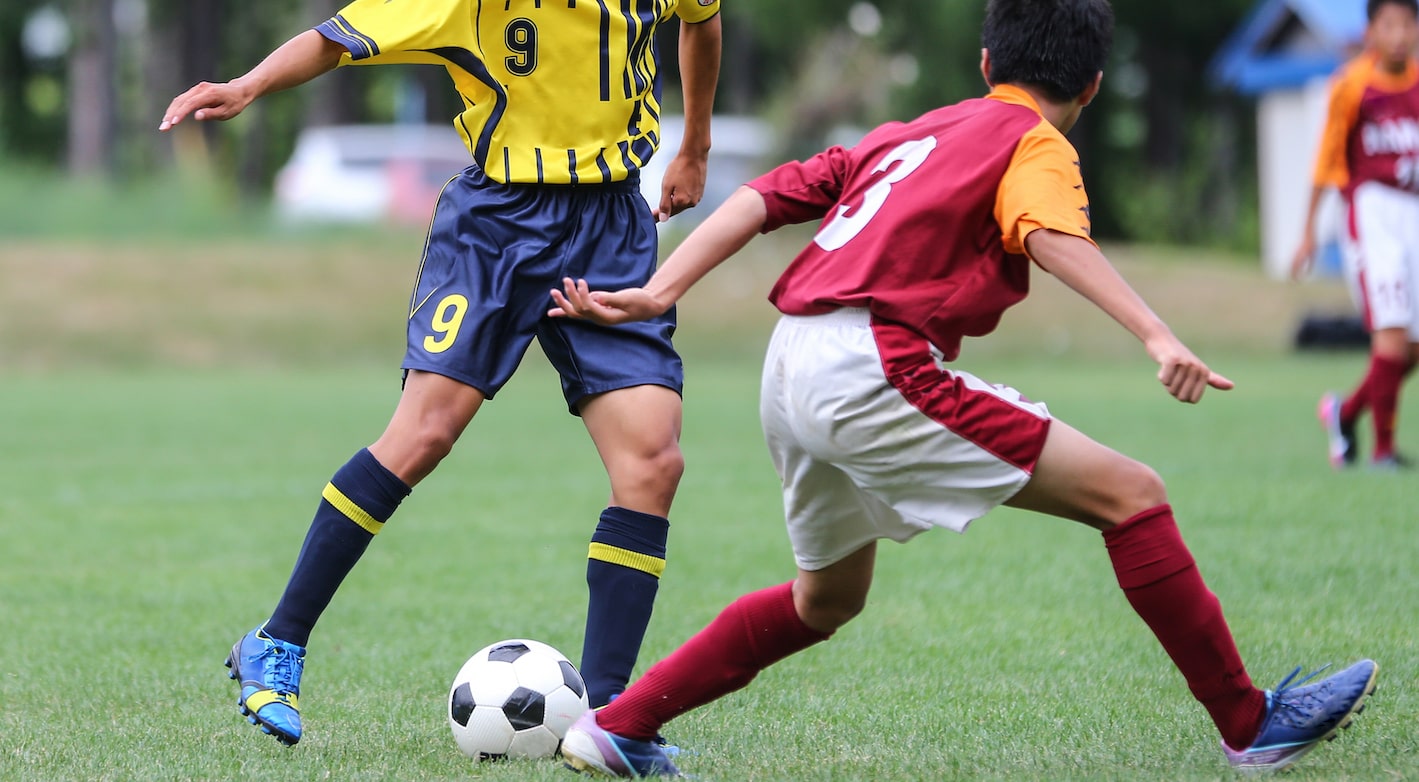
The Importance of Choosing the Right Formation
Choosing the right formation in soccer can greatly impact your strategy and overall game plan. Factors to consider when selecting a formation include the team's strengths and weaknesses, opponent's style of play, and desired balance between attack and defense. For 7v7 games, popular formations include 3-2-1 or 2-3-1 for a balanced approach, or a more attacking 2-1-2 with two forwards pushing forward. As coaches know all too well, choosing the right formation is an essential part of coaching successful games.
Examples of popular formations for different playing styles are numerous; however what works best will vary depending on individual teams' skills sets. It is important to experiment with different options during training sessions to see which suit your players best. Coaching should focus on awareness of both individual player positions within each tactic as well as how they work together effectively as a unit within their chosen formation.
Top 7v7 Soccer Formations to Know
A well-organized soccer formation can make all the difference in winning or losing a game. In this blog post, we have compiled a list of the top 7v7 soccer formations that every coach should know about. Each formation is explained in detail with its strengths and weaknesses, along with advice on how to use them effectively during matches.
The 2-3-1 formation is an excellent choice for teams who prefer attacking play as it allows three players to operate in midfield giving them more control over possession. On the other hand, for those teams who prioritize defense, the 3-2-1 and 3-1-2 formations provide extra support at the back while still maintaining some attacking options up front. With these different variations available, coaches can choose which best suits their team's style of play and personnel.
2-2-2 Formation
The 2-2-2 formation is a versatile soccer strategy that can be used to control the midfield effectively. With two players positioned in front of the defense, and two in behind the attack, this formation provides balance both defensively and offensively. To use it properly, coaches should encourage their midfielders to stay compact and close together while supporting both attack and defense.
Defending against counterattacks with a balanced backline is crucial when using this formation. The key is for defenders to maintain their positions without being pulled out of place by opposing attackers. One way to achieve this is through communication between defenders on who will step forward or drop back depending on how play develops. Additionally, fullbacks should be aware of potential threats coming from the flanks.
Transitioning from defense to offense requires quick thinking and movement in order not to get caught out of position during counterattacks and breaking lines.The best ways to do so include playing short passes between midfielders before finding space for forwards quickly advancing upfield. Alternatively, the ball could be played long towards strikers waiting high upfield.Coaches must emphasize proper positioning during transitions as it’s important that attacking players don’t become isolated when pushing forward into open spaces left by opposing defenses. These strategies can help teams successfully implement the 2-2-2 formation within training sessions or real-life matches.

2-1-2-1 Formation
Having a dedicated defensive midfielder in the 2-1-2-1 formation can provide several advantages. This player acts as a shield for the defense and can intercept passes or make tackles to stop opposition attacks from developing. It also allows the midfielders to focus on their offensive roles, knowing that there is someone behind them covering defensively.
"Splitting" tactics are crucial when attacking through the middle of opposition defenses in this formation. The two central midfielders need to communicate and coordinate with each other to create openings and gaps between defenders, allowing attackers to exploit these spaces for goal-scoring opportunities. Quick passing and movement off the ball are keys to executing successful splitting tactics.
Communication and coordination between defenders and midfielders is vital in any formation, but particularly so in 2-1-2-1. With only two defenders, it's important that they work closely with their teammates ahead of them to ensure that they don't get exposed defensively. Clear communication about marking assignments, switching positions when necessary, and providing cover for each other is essential for keeping opponents at bay while launching counterattacks from deep areas of the field.
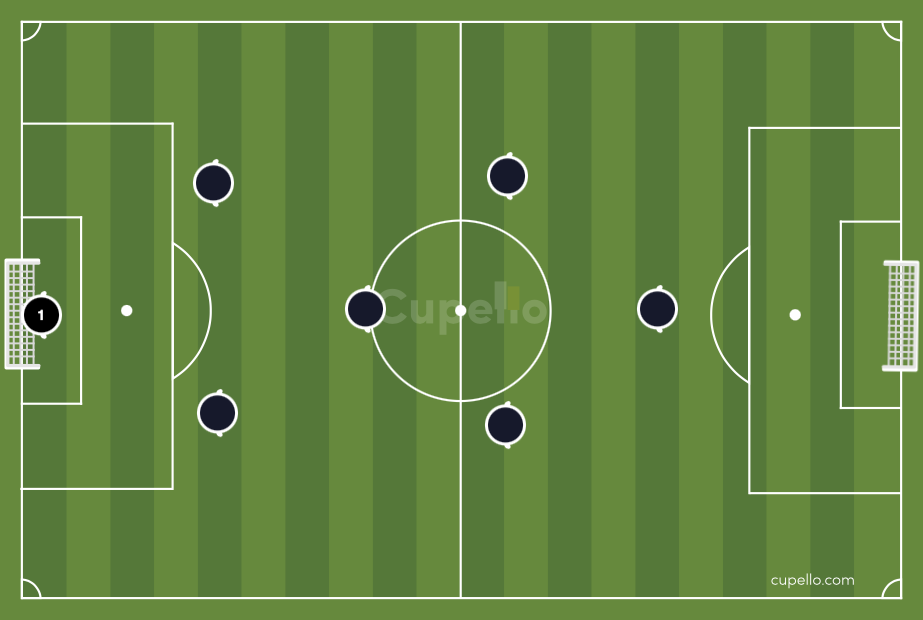
2-3-1 Formation
In the 2-3-1 formation, wing-backs are crucial in both attacking and defending. Their ability to provide width on the flanks opens up space for attacking midfielders and forwards to exploit. It's important to select players with good endurance, speed, and crossing ability for these positions.
An attacking midfielder can be the creative spark of a 2-3-1 formation. They should have excellent vision, passing skills and be comfortable dribbling under pressure. With three central midfielders behind them providing support in possession play, they will have more opportunities to create goal-scoring chances.
Controlling possession is vital in this formation, which requires keeping players spread out across the field. The back line should focus on building from the back and circulating possession while maintaining their shape defensively. A well-drilled team can use this setup effectively against opposing teams that press high up the pitch by exploiting spaces left open when defenders commit too far forward.

3-2-1 Formation
The 3-2-1 formation is a popular defensive strategy amongst soccer coaches. With three defenders, two midfielders and one forward, this formation prioritizes solid defense while still maintaining an attacking presence. The three defenders provide ample cover at the back, while the two midfielders work to disrupt and win possession in the middle of the field. The lone forward focuses on penetrating the opposing team's defense and scoring goals.
One key tip for coaches implementing this formation is to ensure that their midfielder players are versatile and able to both defend and attack effectively. Additionally, communication between players is crucial in order to maintain a cohesive defensive unit. Overall, if executed correctly with well-trained players, the 3-2-1 formation can prove highly effective in controlling possession of the ball while minimizing scoring opportunities for opponents.

3-1-2 Formation
The 3-1-2 formation is a balanced formation that provides both offensive and defensive support. The three defenders at the back provide stability and cover for the goalkeeper, while the central midfielder acts as a pivot, distributing passes to the forwards or dropping deeper to help defend. The two attacking midfielders sit just behind the striker, providing support in attack and defense with their ability to track back quickly.
One of the main advantages of this formation is its versatility - it can easily switch between an attacking or defensive style depending on game situations. However, coaches should ensure proper communication among players in order to maintain positional discipline throughout the game. Overall, with its flexibility and solid structure, using a 3-1-2 formation could be an effective strategy for teams playing soccer 7v7 games.

3-3 Formation
A 3-3 formation is an attacking-oriented soccer formation that consists of three defenders, three midfielders, and three forwards. This formation is often used by teams that want to score more goals than their opponents while maintaining a strong defensive structure. The three central midfielders in this formation are responsible for controlling the game's tempo and distributing the ball to the attackers.
One key advantage of using a 3-3 formation is its flexibility in defense and attack. The wide players can overlap with full-backs or drop back to support defensively, while the central midfielder can provide additional cover when needed. Coaches who use this system should focus on developing players' technical abilities so they can create scoring opportunities from any position on the field.

Tips for Coaches on Implementing Formations in Soccer Training Sessions
When implementing formations in soccer training sessions, it's important for coaches to first understand player positions and their roles within the formation. Communication among players is also crucial, as it helps ensure everyone grasp their responsibilities on the field. Practicing transitions and switching positions during drills can improve players' ability to adapt to new formations quickly. Additionally, giving players time to adjust and become comfortable with a new formation before introducing another one can lead to greater success on the field. By following these tips, coaches can effectively implement formations in 7v7 soccer games and help their team achieve victory.
Understanding Player Positions
Defenders play a crucial role in maintaining the team's defensive structure and stopping opposing attackers. In a 7v7 formation, defenders are responsible for covering a smaller area of the field, making it easier to mark individual players. The roles and responsibilities of the right defenders include:
- Staying goal-side of their opponent
- Marking tightly but not committing fouls
- Cutting off passing lanes
Midfielders play an important role in creating attacking opportunities by controlling possession and distributing passes to forwards. They also help out defensively when needed. Some key responsibilities of midfielders include:
- Playing both offensive and defensive roles
- Maintaining possession of the ball through passing and dribbling
- Creating scoring chances with accurate passes
Forwards have the responsibility of putting pressure on the opposition's defense, forcing turnovers or errors that can lead to goals. Pressing effectively requires quick reactions, smart positioning, and good communication with teammates.
Overall, understanding each player position is essential for coaches looking to create effective strategies within a 7v7 soccer formation. By teaching specific roles and responsibilities along with tactical considerations like pressing tactics or transitions between positions during games or training sessions will be more successful at producing positive results on match day!
Encouraging Communication Among Players
Teaching players how to communicate effectively on the pitch is crucial for successful team play. By encouraging open communication, coaches can help their teams become more cohesive and adaptable on the field. Here are some ways you can promote better communication among your players:
- Use drills that require constant communication between players
- Create a team culture that values open communication
- Teach specific strategies for effective communication, such as calling out positions or using hand signals
By incorporating these methods into your training sessions, you can improve both individual player skills and overall team dynamics.
Practicing Transitions and Switching Positions
Drills for practicing quick transitions from defense to attack are crucial for 7v7 soccer teams. When a team is able to switch positions efficiently, they can gain an advantage over their opponents and increase their chances of scoring. Some drills coaches can use to improve this skill include having players practice quickly passing the ball upfield after stealing it from the opponent, or setting up small-sided scrimmages where players have specific roles in both attacking and defending.
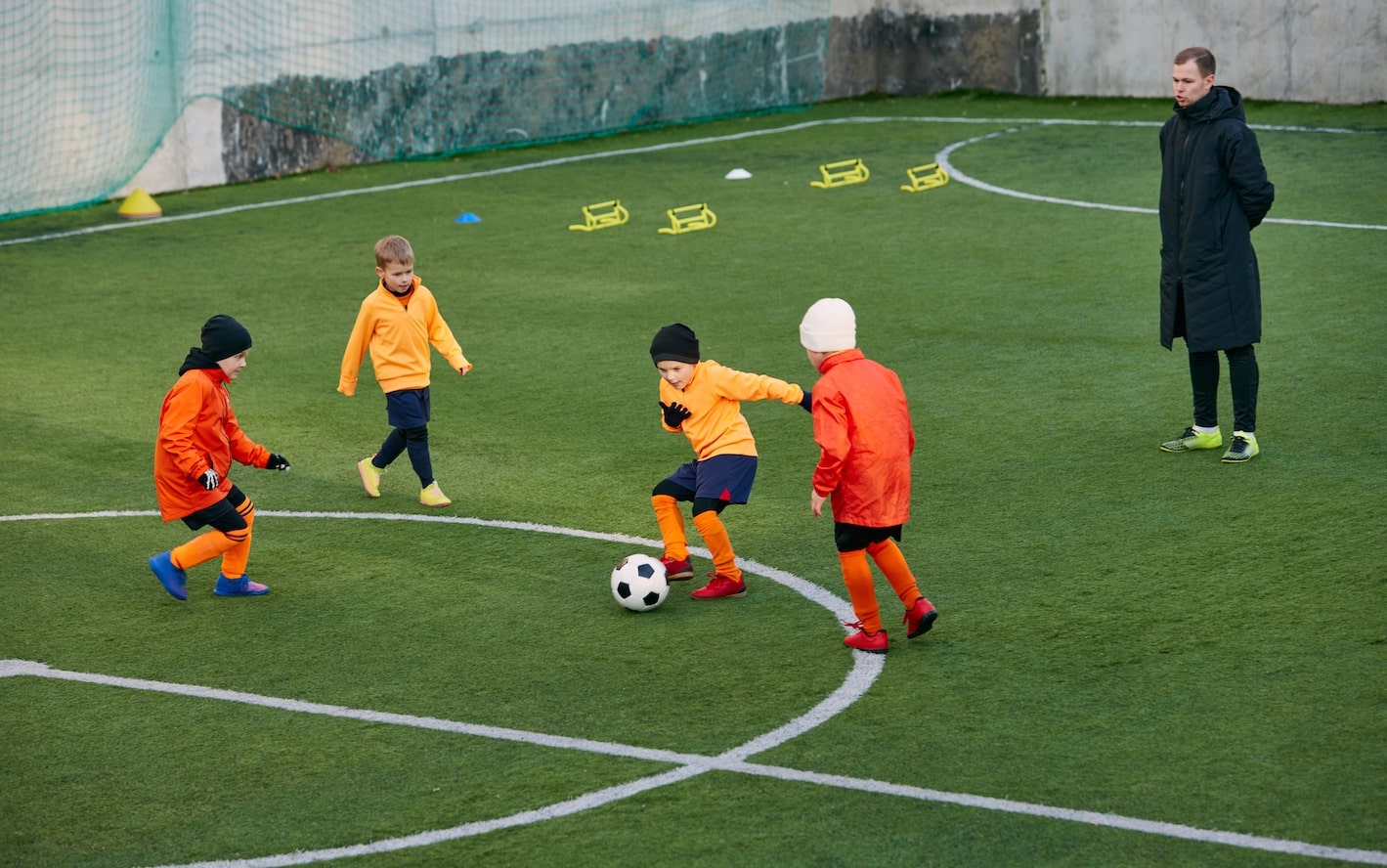
The benefits of having players comfortable playing multiple positions cannot be overstated. By doing so, coaches can create more versatile and adaptable teams that are better equipped to handle unexpected changes during a game. Additionally, teaching players different positions helps them develop a deeper understanding of the game overall.
Another important aspect of practicing transitions and switching positions is helping players understand their role within different formations. This means coaching them on how best to utilize their skills and abilities based on where they are positioned on the field. Some tips for achieving this include:
- Assigning specific roles within each formation
- Providing clear instructions before games or practices
- Encouraging communication among teammates about positioning
By implementing these strategies into training sessions, coaches can help build well-rounded player skillsets while also creating cohesive teams that work together effectively during matches.
Giving Players Time to Adapt to New Formations
Gradually introducing new formations during training sessions is crucial for players to adapt and excel in different positions. Coaches must consider each player's strengths when selecting formations, as well as identify any areas that need improvement. Additionally, effective communication among players is essential for smooth transitions between different formations during games.
To ensure a successful transition to new soccer formations 7v7, coaches should follow these tactics:
- Start with basic formation structures before progressing to more complex ones
- Allow sufficient time for players to understand and practice the new formation
- Encourage open communication among team members during gameplay
- Analyze individual performances after each game or scrimmage
- Adapt and adjust the formation based on individual player strengths
By giving players time to adapt and gradually implementing new strategies, coaches can help their team become more versatile on the field while still playing up their strengths.


Improve Your GameJust 1.99 p/m
Exclusive drills and sessions, get involved today!
- 100’s of Drills
- Coach to Camera Videos
- Sessions from Pro’s
- Industry Leading Advice
To summarize, using specific formations in 7v7 soccer can enhance the team's performance and overall success. However, it's crucial to consider team strengths and weaknesses before selecting a formation. Coaches must encourage their players to experiment with different formations during practice games to help them find what works best for their team dynamics. By taking these factors into account, coaches can optimize their team's chances of winning matches while also promoting individual player development.

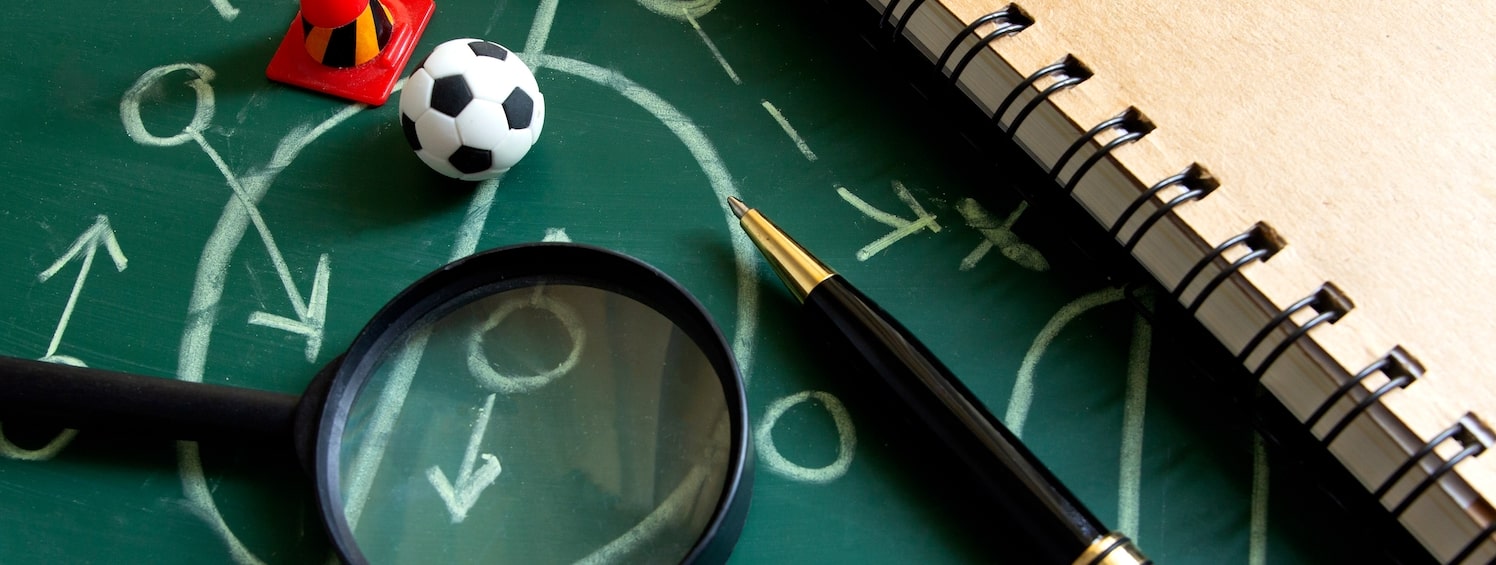
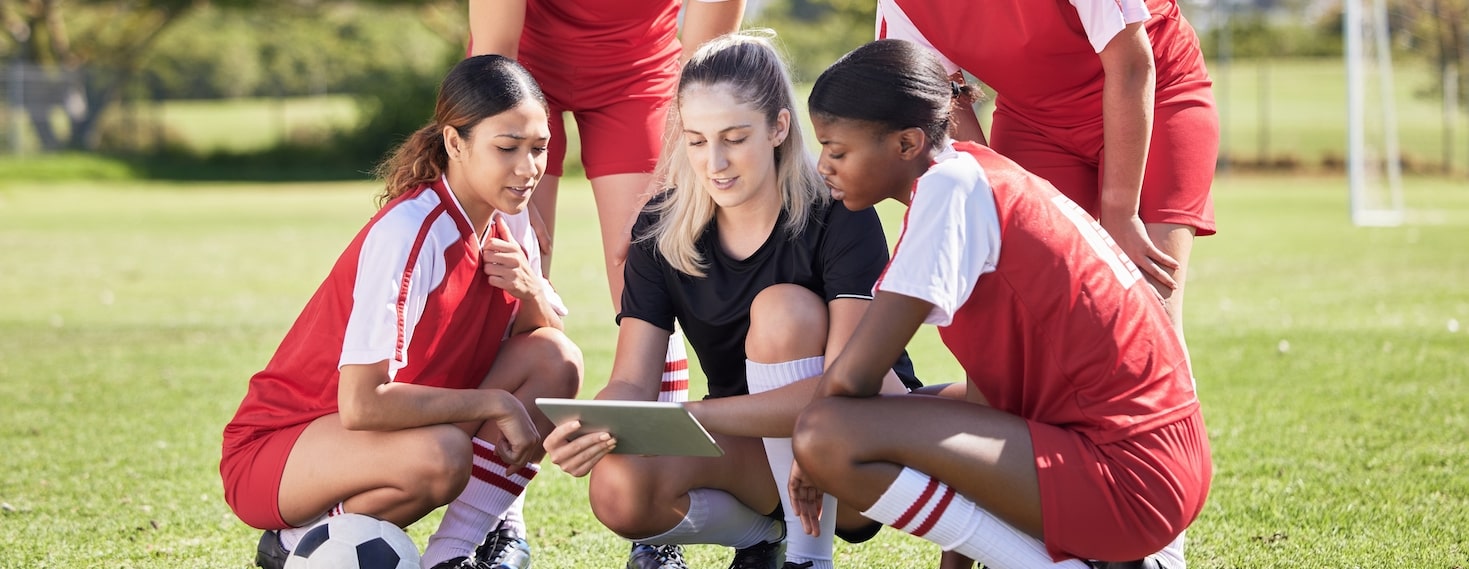
Cupello
Rethinking soccer coaching via our industry leading tools. Built to offer effective coaching development solutions for players and coaches of all levels.